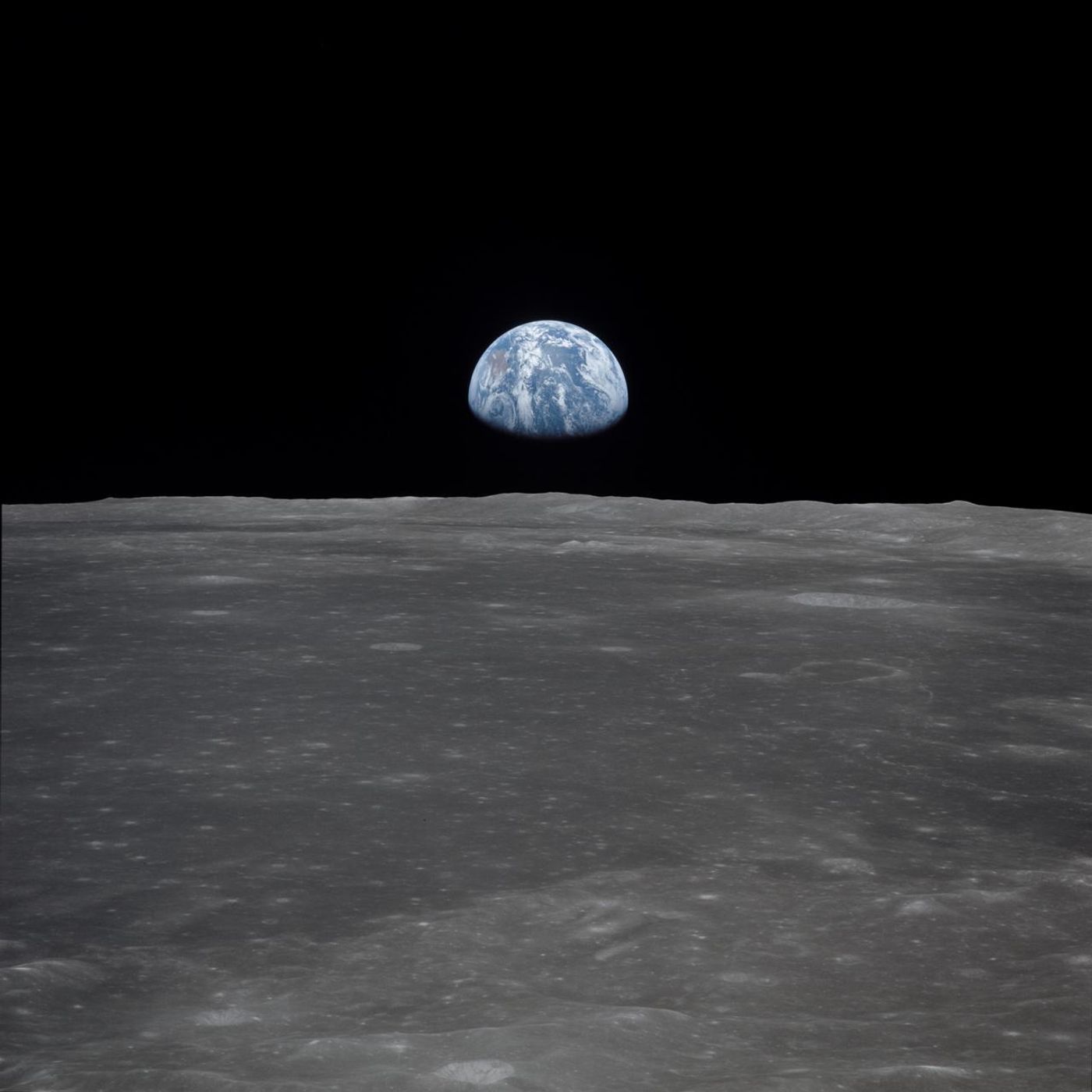This Day in Science History 7/20/1969: One Giant Leap for Mankind
On July 20, 1969, humans walked on the Moon for the first time. Fifty-three years ago, the Apollo 11 mission paved the way for future space exploration and proved that anything was possible.
On May 25, 1961, President John F. Kennedy set a national goal to perform a crewed lunar landing and safely return to Earth. This goal became realized just 8 years later. On the morning of July 16, 1969, a Saturn V rocket launched from Kennedy Space Center with the command module Columbia atop carrying the Apollo 11 astronauts: Neil Armstrong (Commander), Edwin “Buzz” Aldrin (Lunar Module Pilot), Michael Collins (Command Module Pilot). It took the astronauts 76 hours to travel 240,000 miles to enter lunar orbit on July 19th.
On July 20th, Neil Armstrong and Buzz Aldrin traveled in the lunar module “Eagle” to the Moon’s surface, landing in the Sea of Tranquility, a relatively smooth and level area, where Armstrong relayed the famous message “The Eagle has landed.” back to Mission Control in Houston, Texas. Next, Armstrong existed the module, becoming the first human to walk on the Moon, proclaiming “That’s one small step for man, one giant leap for mankind.” It is estimated that 650 million people watched this infamous moment.
Aldrin and Armstrong spent more than 2.5 hours outside the module on the surface of the Moon. They took photographs of the terrain, planted a U.S. flag, ran a few scientific tests, collected samples of the Moon, and spoke with President Richard Nixon via Mission Control.
After spending 21 hours and 36 minutes on the Moon, the two men traveled back to the command module, rejoining Collins, and began their journey back to Earth. The astronauts splashed down to Earth in the Pacific Ocean. They were recovered and brought back to Hawaii on July 24, 1969. The astronauts had to go through customs, reporting that they traveled to the Moon and declared their lunar samples. The men had to quarantine for three weeks as a precaution so as to not bring back any contagions from the Moon. After the three weeks, the men were welcomed home and celebrations could begin.
Since this lunar landing mission, there were five more successful landings. The last time men walked on the Moon was during the Apollo 17 mission (December 14, 1972 – astronauts Eugene Cernan and Harrison Schmitt).
The Apollo program had quite a legacy; it was extremely costly at $24 billion (approximately $100 billion in today’s dollars) and labor intensive, employing an estimated 400,000 engineers, technicians, and scientists. The program also inspired millions of Americans both intellectually and creatively, inspiring many children to pursue careers in science and having a profound impact on the media and entertainment industry.
Sources: history.com, nasa.gov, spacecenter.org









